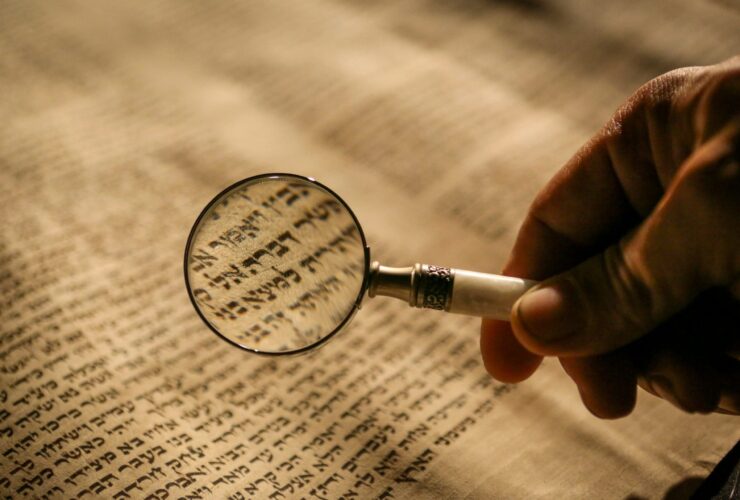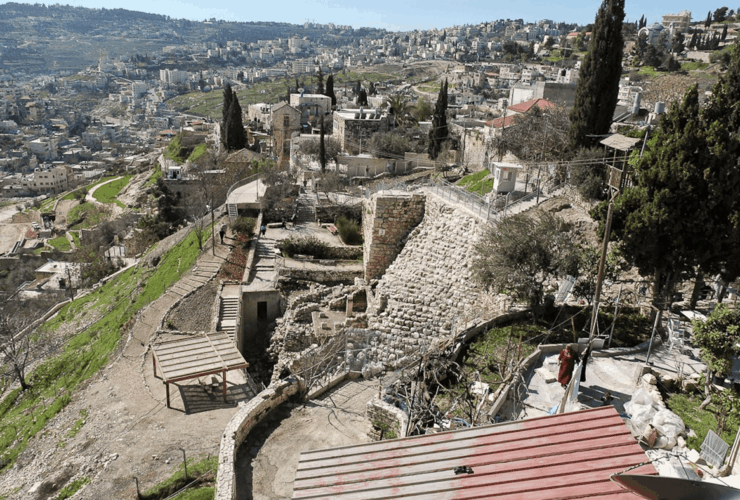In Daniel 5 Belshazzar, the very last Babylonian king, foolishly mocks Yahweh at a large public feast by using the gold and silver vessels acquired from God’s temple in Jerusalem as wine goblets while praising “the gods of gold and silver, bronze, iron, wood, and stone” (v.4). But his irreverence was interrupted when “the fingers of a human hand appeared and wrote on the plaster of the wall of the king’s palace” (v.5). This instantly put the fear of God into this reckless royal who immediately called in his best wisemen promising that “Whoever reads this writing, and shows me its interpretation, shall be clothed with purple and have a chain of gold around his neck and shall be the third ruler in the kingdom” (v.7) But none of these so-called ‘wise men’ could even read let alone interpret the writing. Only God’s prophet Daniel could decipher this mysterious code. Belshazzar had been weighed and measured and found lacking and so his kingdom would be divided and given to the Medes and Persians. And so it was: “That very night Belshazzar the…king was killed. And Darius the Mede received the kingdom…” (v.30-31).
“Immediately the fingers of a human hand appeared and wrote on the plaster of the wall of the king’s palace…. Then the king’s color changed, and his thoughts alarmed him; his limbs gave way, and his knees knocked together..”
Daniel 5:5-6
While skeptics would have us believe that this story is nothing more than a Sunday school fantasy, archaeological evidence shows otherwise. For example, although Belshazzar was unknown to secular history, in 1854 his name was discovered in Ur inscribed into four identical cylinders made by his father King Nabonidus.[1] But the cylinders of Nabonidus aren’t the only artifacts that help to substantiate this Biblical account. As archaeologist Dr. Titus Kennedy writes in his book Unearthing the Bible, “Another cuneiform text called the Verse Account of Nabonidus, found at Babylon, states that Nabonidus left Babylon on a long journey and entrusted the kingship to his firstborn son, whose identity as Belshazzar is known from the cylinders. Nabonidus was the final Babylonian king until the Persians conquered Babylon in ca. 539 BC, and yet he had little interest in ruling from Babylon or managing typical affairs of the state.”[2] In fact, “The Nabonidus Chronicle states several times that King Nabonidus was not in Babylon, but the ‘prince’ (Belshazzar) was there. The 5th-century BC Greek historian Xenophon, in Cyropaedia, wrote that the son of a Babylonian king, also called a king, was ruling in Babylon when the Persians conquered the city…Combining the evidence from these Babylonian documents illuminates the circumstances surrounding the reign of Nabonidus, including his departure from the capital and his appointment of his firstborn son, Belshazzar, as coregent to rule as king in Babylon.”[3] So, as Kennedy goes on to explain, “These documents not only confirm the existence of Belshazzar and his position as king of Babylon until the Persians captured the city, but the text explains why Belshazzar would only be able to grant third place in the kingdom to anyone who interpreted the handwriting on the wall, since his father Nabonidus was first in the kingdom and Belshazzar was second.”[4]
While these discoveries are a powerful testimony to the historical reliability and truthfulness of Daniel’s account, even to the smallest details regarding political matters in 6th century Babylon, skeptics still remain unconvinced because they think Daniel made a couple of big errors regarding Belshazzar. For one thing, Daniel refers to Belshazzar as the king when in fact he was the prince. Also, Daniel says several times that Nebuchadnezzar was his father when in fact his father was Nabonidus. But remember what Xenophon told us: Even though Belshazzar was technically the prince, he was also called a king, since his father all but abdicated the throne and gave the kingship to his son. So the Bible is accurate when it identifies Belshazzar as the king. And as for Belshazzar’s relationship to Nebuchadnezzar, we know that Nebuchadnezzar was not his father. As a matter of fact, says Bible scholar Boyd Seevers, “Belshazzar may not have [even] been a blood relative to Nebuchadnezzar at all.” But as he goes on to explain, “The author of Daniel may be using ‘father’ in the sense of ‘father’ and ‘son’ as dynastic predecessor and successor. One sees this when the Black Obelisk of Shalmaneser III of Assyria describes the Israelite king Jehu as the ‘son of Omri.’ Jehu and Omri had no blood relation; Jehu was simply Omri’s later successor. In this sense, Nebuchadnezzar was Belshazzar’s father as his predecessor on the Babylonian throne. Additionally, ‘father’ and ‘son’ can also be used of ancestor and later descendant, as Jesus was a ‘son of David’ (Matt. 1:1). Though far from certain, Belshazzar may have been Nebuchadnezzar’s descendant. It is unclear how Belshazzar’s father, Nabonidus, secured the Babylonian throne, since he was not a son of Nebuchadnezzar. If he married a daughter of Nebuchadnezzar as Neriglissar (r. 560-556 BC), the second king after Nebuchadnezzar, had done, Belshazzar would have been a grandson of Nebuchadnezzar. If this connection is correct, Nebuchadnezzar would have been Belshazzar’s ‘father’ as both predecessor and ancestor.”[5] So, Daniel makes no mistakes and truly is a reliable historical account. The writing, as they say, is on the wall!

Ryan Hembree is a daily co-host, speaker, and writer of Bible Discovery. He also hosts a YouTube channel that shows the unity of the Bible and how science and Scripture fit together. Ryan also has an honorary Masters of Ministry in Creation Science from Phoenix University of Theology.






